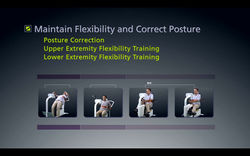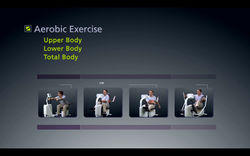Tel: +886-4-2389-0400
Geriatric Reconditioning Program
















Prevalence
Today, there are nearly 1 billion people in the world over the age of 60. By the year 2030, the number of individuals 65 years and over will reach 70 million in the United States alone. Those 85 and older will then be the fastest-growing segment of our population. According to World Health Organization, being in the older age group is becoming the 'new normal' for the world's population.
(Exercise and older adult, ACSM current comment)
Clinical Symptoms
The changes associated with old age comprise both physical changes and mental changes.
There is often a general physical decline, and people become less active. Old age can cause, amongst other things:
(i) Impaired muscle strength/muscle power of lower extremities
(ii) Impaired balance/postural control
(iii) Impaired gait
(iv) Impaired vision
(v) Fall-associated medications/ number of medications
(vi) Impaired cognitive functions
(Runge 2000, Balance training and exercise in geriatric patients, Hylomome)
(http://en.wikipedia.org/wiki/Old_age)
Several studies have clearly shown that, during aging, even when neurological disease is not present, there is a progressive and gradual loss of some intellectual functions.
(Costarella, 2010, Decline of physical and cognitive conditions in the elderly measured through the functional reach test and the mini-mental state examination, Archives of Gerontology and Geriatrics 50 (2010) 332–337)
Common frailty index for geriatric group includes physical activity, walk time, and grip strength.
Clinical Treatment
A program of regular exercise for geriatric group includes cardiorespiratory, resistance, flexibility, and neuro-motor exercise training beyond activities of daily living. The goal is to improve and maintain physical fitness and health, and exercise is essential for most adults. Treating diseases and preventing or minimizing disease-related and age-related functional decline and restitute functional independence after acute illnesses are also important.
(Costarella, 2010, Decline of physical and cognitive conditions in the elderly measured through the functional reach test and the mini-mental state examination, Archives of Gerontology and Geriatrics 50 (2010) 332–337)
 |  |  |
|---|---|---|
 |  |  |
 |  |
1
Maintain Flexibility and Correct Posture
2
Major Muscles Groups Strengthening Exercise
3
Aerobic Exercise
4
Balance Training
5
Practice Components of Functional Movement
6
Coordination Training
Therapeutic Effect
Regular exercise program is an effective way to reduce and/or prevent a number of the functional declines associated with aging. Older adults have the ability to adapt and respond to both endurance and strength training.
(Exercise and older adult, ACSM current comment)
Exercise programs for geriatric group often focus on flexibility, balance and light aerobic exercise.
(Barrett, 2002, A comparison of community-based resistance exercise
and flexibility exercise for seniors, Australian Journal of Physiotherapy 2002 Vol. 48)
Pain and physical function improvement were found in geriatric group with knee osteoarthritis with a group exercise program.
Community based progressive resistance training program using free weights improves physical outcomes of community dwelling older people.
(Barrett, 2002, A comparison of community-based resistance exercise and flexibility exercise for seniors, Australian Journal of Physiotherapy 2002 Vol. 48)
Exercise programs significantly improve balance and mobility in geriatric group with balance problems, independent of strategy. Enhanced balance training may, in addition, improve confidence and quality of life.
(Steadman, 2003, A Randomized Controlled Trial of an Enhanced Balance Training Program to Improve Mobility and Reduce Falls in Elderly Patients, JAGS 51:847–852, 2003)
© 2013 by Preventive Medical Health Care Co., LTD.



